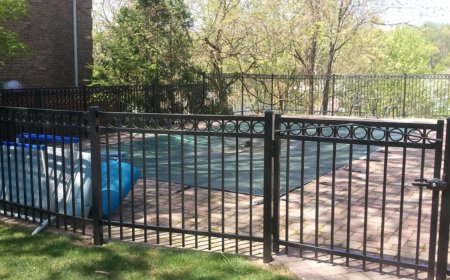Keep Your Car's Paint Looking Brand New with These Proven Tips
Keep your car’s paint shining like new with simple, effective care methods. Learn proven tips to protect your vehicle’s finish and maintain its showroom look.

When does a car look beautiful? When its paint stays on it for a long time without fading, the actual color. But paint is not only about keeping the car beautiful, but also protecting it from the elements. The glossy shine you see on day one starts to fade slowly if you don't take care of it. At first, it's subtle, a dull spot here, a tiny scratch there. But one season of neglect is enough to make your car look years older than it really is.
Whether you drive a sleek sedan or a family SUV, protecting your car's exterior paint means preserving its beauty and value. And the good news? It's not rocket science. With a few smart habits and simple tricks, you can keep that fresh-from-the-showroom glow for years.
Here are 10 proven, practical, and easy-to-follow tips to keep your car's paint looking brand new, no matter how much you drive.
1. Wash Your Car Regularly
Dirt, dust, pollen, and road grime build up fast. If you don't check your car, these particles can scratch your paint when they rub against the surface. That's why regular washing is a must.
- Wash your car at least every two weeks, or more often if you live near the ocean or drive on dusty roads.
- Use pH-balanced car shampoo instead of dish soap, which can strip wax and dull the finish.
- Always wash with a microfiber mitt and rinse thoroughly to avoid dragging dirt around.
- Start from the top and work your way down; gravity will help carry the dirt away.
Real-life tip: Avoid automatic car washes with spinning brushes. They can leave swirl marks and tiny scratches. A gentle hand wash is far safer for your paint.
2. Dry It Properly to Avoid Water Spots
Leaving your car to "air dry" might seem harmless, but those water droplets act like little magnifying glasses under the sun. They leave behind mineral spots that are tough to remove later.
- Use a clean, soft microfiber drying towel or a car dryer blower.
- Gently blot the surface, rather than dragging the towel across it.
- Pay attention to door jambs, mirrors, and trim areas where water can hide.
Water spots may not seem like a big deal at first, but over time, they can stick to the clear coat and make polishing or even repainting necessary.
3. Park in the Shade Whenever Possible
Sunlight might look beautiful on your polished hood. But when you keep the car outside under the UV rays for a long time, it becomes the biggest enemy of paint, and then your vehicle. It causes oxidation, fading, and dullness.
- Whenever possible, park your brand-new car under a metal garage building. It will protect
- If you don't have access to covered parking, consider applying UV-protective sealants or waxes that act like sunscreen for your car.
- Even parking with the front or rear facing the sun instead of the sides can reduce uneven fading.
Pro tip: A carport or prefab garage is an affordable way to give your vehicle daily protection without building a complete brick structure.
4. Wax for a Deep Shine and a Layer of Protection
Waxing isn't just about getting that glossy mirror finish. It creates a protective shield between your paint and the outside world. So, use it to keep your car brand new for a long time. But, follow the points below for better results.
- Wax your car every 2-3 months, depending on the product and driving conditions.
- Use a quality carnauba wax or synthetic polymer wax for long-lasting results.
- Apply in thin, even layers with a foam applicator, and buff with a clean microfiber towel.
This simple step guards against UV rays, road grime, bird droppings, and light scratches. It will keep your paint smooth and shiny.
5. Handle Bird Droppings and Bug Splatters Immediately
Bird droppings, tree sap, and bugs aren't just gross; they are acidic and can eat through the clear coat if ignored. The longer they sit, the harder they are to remove and the more likely they will leave permanent marks.
- Keep a small spray bottle of quick detailer and a soft cloth in your car.
- Wipe messes off as soon as you spot them, especially on hot days when the sun can bake the acid into the paint.
- For stubborn spots, soak the area with a damp towel for a few minutes before wiping.
Important Tip: Never scrub dry droppings; otherwise, you will scratch the surface. Always soften first, then gently lift off. To avoid this mess, always park your car inside a garage structure and away from trees.
6. Use Proper Tools and Skip the Old Rags
Many people damage their car's paint by using the wrong cleaning tools. Old T-shirts, bathroom towels, or cheap sponges might seem harmless, but they can leave micro-scratches all over your vehicle.
- Stick to high-quality microfiber towels, wash mitts, and soft foam applicators.
- Rinse your tools frequently while washing to avoid trapping dirt.
- Wash your microfiber towels separately and without fabric softeners to keep them effective.
These small habits will prevent swirl marks, those annoying circular scratches that are especially visible on darker-colored cars.
7. Consider a Ceramic Coating for Long-Term Protection
Ceramic coatings have become popular for a reason. This liquid polymer bonds with your car's paint, creating a semi-permanent hydrophobic layer that resists dirt, water, UV rays, and chemicals.
- A professionally applied ceramic coating can last between 2 and 5 years. However, it also depends on quality and care.
- DIY kits are available but require careful preparation and application.
- Ceramic coatings don't make your car "scratch-proof," but they do make washing easier and reduce fading over time.
While it's a bigger investment upfront, ceramic coating can save you from frequent waxing and detailing costs in the long run.
8. Protect Against Seasonal Hazards
Your car needs different protection in different seasons. Using the cleaning steps in summer may not be effective in winter. It is because different seasons bring different challenges for your car's paint:
- Winter: Road salt is corrosive, so rinse it off frequently and apply an extra layer of wax for protection.
- Summer: UV rays are strongest; therefore, shade and UV protectants are crucial.
- Rainy season: Moisture plus dirt is a recipe for rust and dullness. So, dry your car thoroughly and keep door seals clean.
Storing your car inside a steel garage or under a durable metal structure during extreme weather conditions adds an extra layer of protection.
9. Don't Forget the Undercarriage and Wheel Wells
Many people wash only what they see, the body panels, but ignore the undercarriage and wheels. Dirt, salt, and debris accumulate underneath and can creep into the lower edges of the paint. It causes bubbling and corrosion that deteriorate the vehicle over time.
- Use a pressure washer or a specialized undercarriage attachment to rinse beneath the car.
- Clean the wheel wells and fender liners regularly.
- A clean undercarriage prevents rust from creeping upward and damaging the painted panels.
This step is especially important if you live in areas with high snowfall or near the coast, where salt exposure is more prevalent.
10. Adopt Preventive Habits
Finally, protecting your car's paint isn't about one big step; it's about consistent, smart habits. So, use small steps because they add up to an overall better condition of the car.
- Avoid leaning against your car or placing bags on the hood.
- Don't wipe a dusty car with a dry cloth.
- Keep a soft duster handy for quick cleanups.
- Schedule a deep clean and inspection every few months to catch issues early.
Wrapping It Up
Keeping your car's paint looking brand new doesn't require fancy tools or expensive products. It just needs the right way to follow. Along with the right ways, you need to be being consistent while using them. It will give your car the care it deserves, and that's for a long time to come. Your vehicle can look stunning for years, turning heads wherever you go.









































